Lincoln University’s Quinoa Field Day: Pioneering Crop Research and Development
Office of Communications and Marketing
Young Hall
820 Chestnut Street
Jefferson City, MO 65101
 Attendees enjoy a trolley ride to the quinoa fields, where they interact with the plant firsthand.
Attendees enjoy a trolley ride to the quinoa fields, where they interact with the plant firsthand.
Lincoln University Cooperative Research (LUCR) hosted Quinoa Field Day at Carver Farm on July 16, showcasing groundbreaking research on quinoa’s potential as a resilient and sustainable crop. The event attracted over 60 participants, including community members, producers and health enthusiasts, who learned about quinoa’s adaptability, nutritional benefits and cultivation methods through LUCR’s extensive research and field trials.
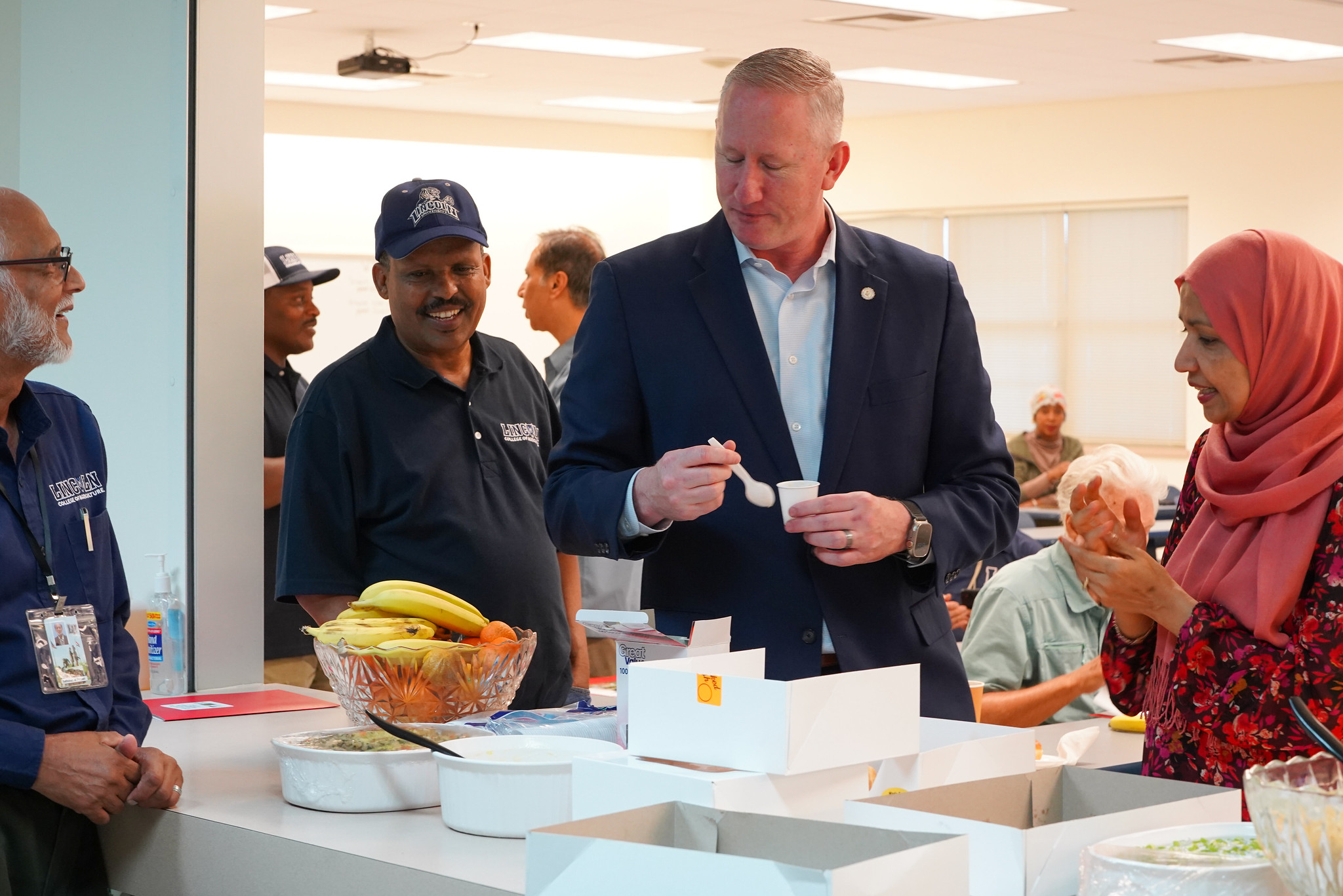
President John Moseley samples quinoa pudding at Quinoa Field Day.
At the forefront of this initiative is Salliullah Pathan, Ph.D., Lincoln University of Missouri (LU) associate professor of crop science and researcher. Special guest speaker Kamalendu (KB) Paul, Ph.D., who devoted 42 years to LU’s College of Agriculture before retiring in 2022, shared how quinoa became a primary research focus at the institution. “Believe it or not, Lincoln University is one of the leading quinoa researchers in the U.S. for grains, leafy greens and more — and Dr. Pathan made it possible,” Paul said.
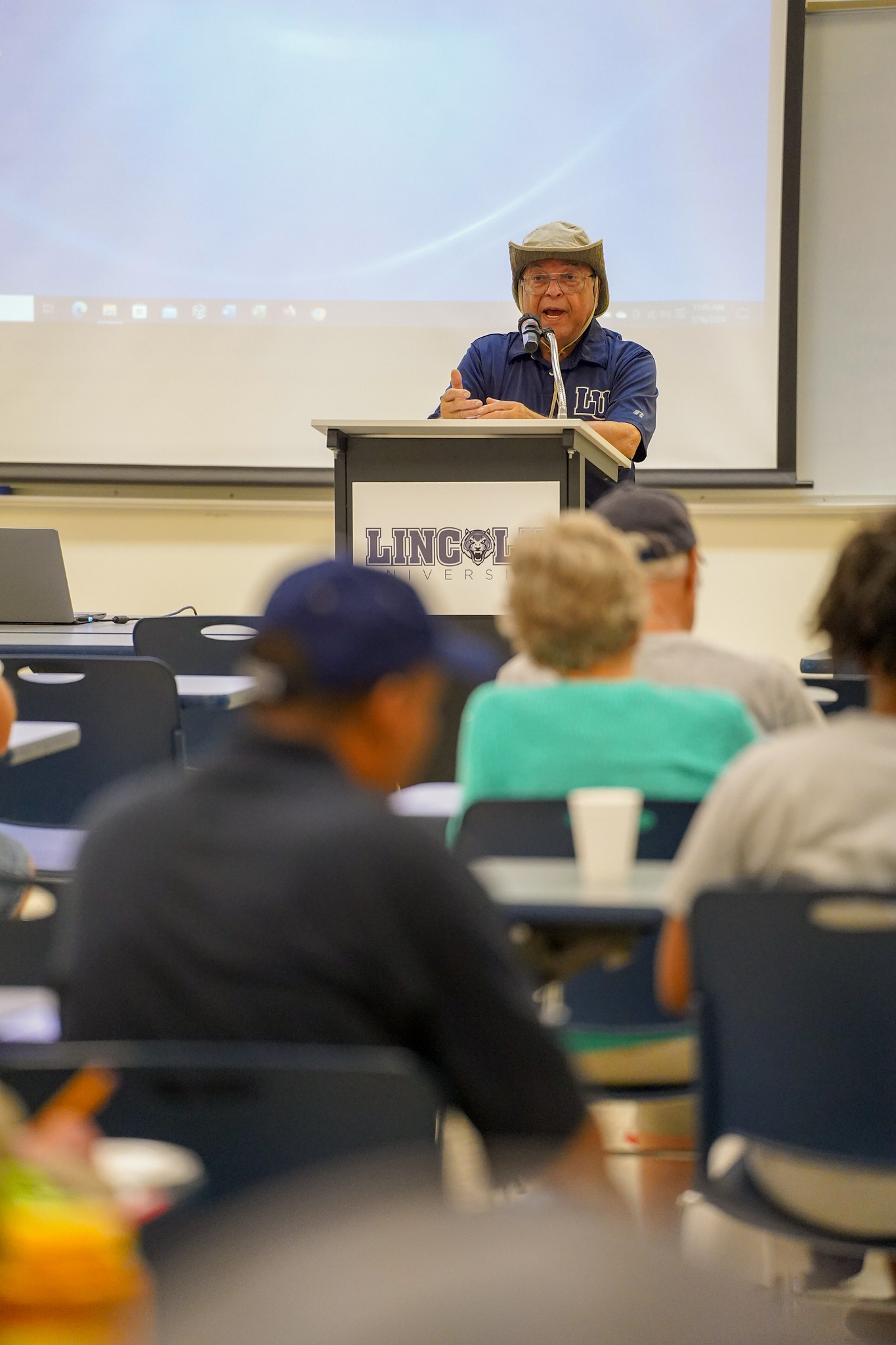
Dr. Paul speaks on how quinoa became a major initiative at LU.
Attendees further learned how this initiative, which began in 2016, emerged from the necessity to find sustainable and profitable crop options for small farmers, who often struggle to compete against large-scale agricultural operations. Paul recounted how Pathan's research identified quinoa as an ideal alternative, highlighting its nutritional benefits and market potential for marginal farmers in the Midwest. “Our preliminary field trial in 2023 demonstrated that it is possible to harvest both leafy greens and grains from the same plants with promising economic returns,” Pathan said.
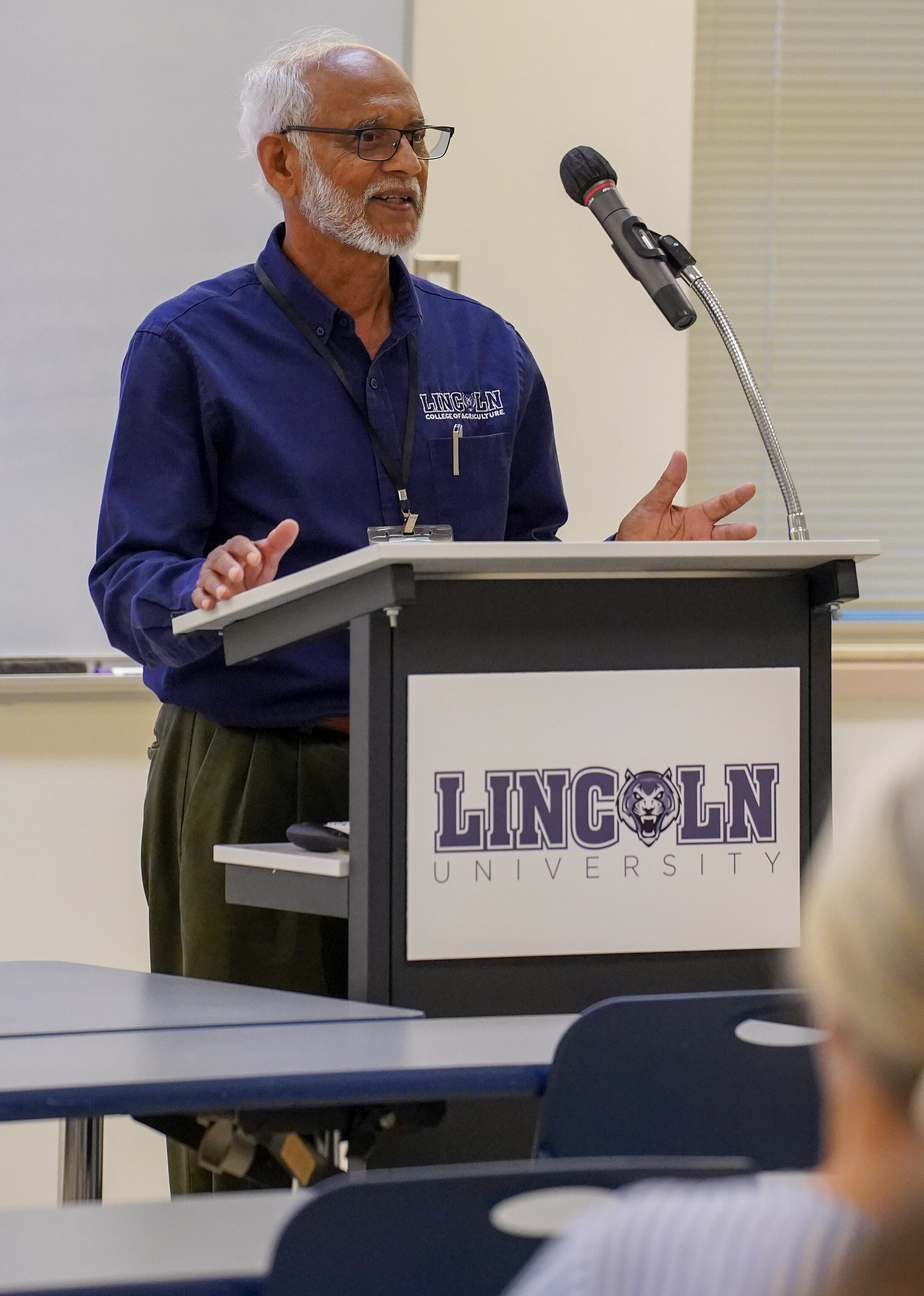
Dr. Pathan informs audience members of the many benefits of quinoa.
During Quinoa Field Day’s presentation of “Quinoa Grains, Greens, and Beyond,” attendees discovered the global reach of quinoa cultivation and research, which has expanded to over 100 countries, including the United States. It was reported that Peru and Bolivia produce over 90% of the world's quinoa, while the U.S. grows only a small amount in the high elevations of the Northwest and minimal quantities in the Midwest. Despite this, the U.S. remains the world's largest consumer and importer of quinoa, presenting significant opportunities for farmers and producers in Missouri. Pathan additionally reported that quinoa research at Lincoln University has identified two suitable varieties out of 128 tested over five years, proving viable for Missouri's dry conditions.
“Quinoa does not require much water and is drought tolerant, making it an optimal crop for growth,” said Addissu Ayele, Ph.D., an expert in plant physiology at Lincoln University. Ayele's research delves into quinoa’s response to moisture stress and nutrient management, with the goal of optimizing agronomic practices for better yields. For small farmers in drought-prone areas, quinoa presents a promising option with minimal investment and a higher chance of profitability.
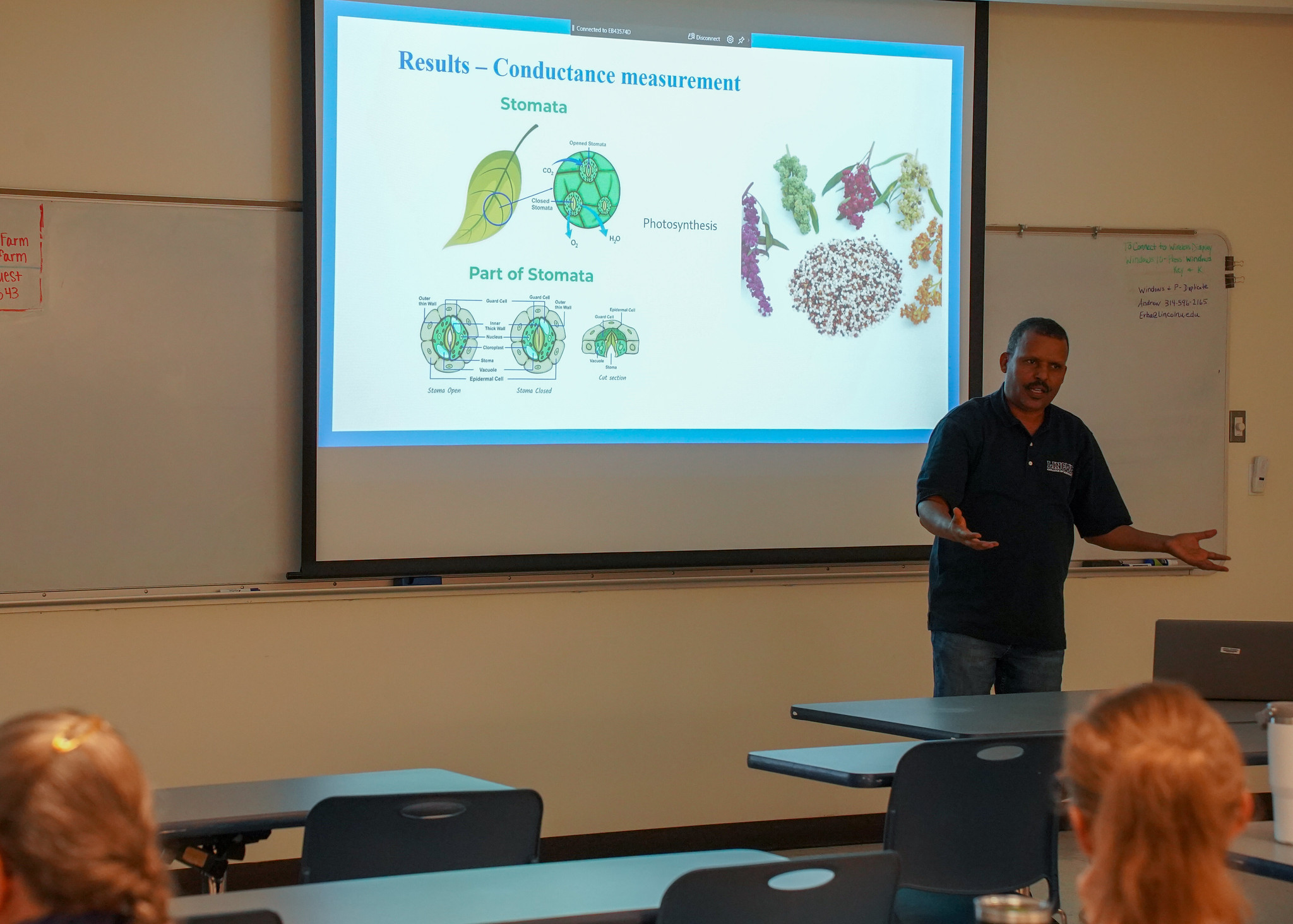
Dr. Ayele presents on moisture stress and nutrient management.
Grato Ndunguru, LU research technician, informed attendees about his focus on maximizing quinoa production, particularly with quinoa greens. He highlighted recent advancements in cultivation techniques developed over the past three years. “Last year, we discovered that cutting quinoa plants six inches above the ground encourages new branches to grow, leading to a second harvest,” Ndunguru said. “This method showed promising results, as we could harvest greens within four weeks and grains after 90 days of sowing from a single plant.” He also noted that quinoa leafy greens can be grown year-round in fields, high tunnels or greenhouses, providing farmers with even greater flexibility and potential.
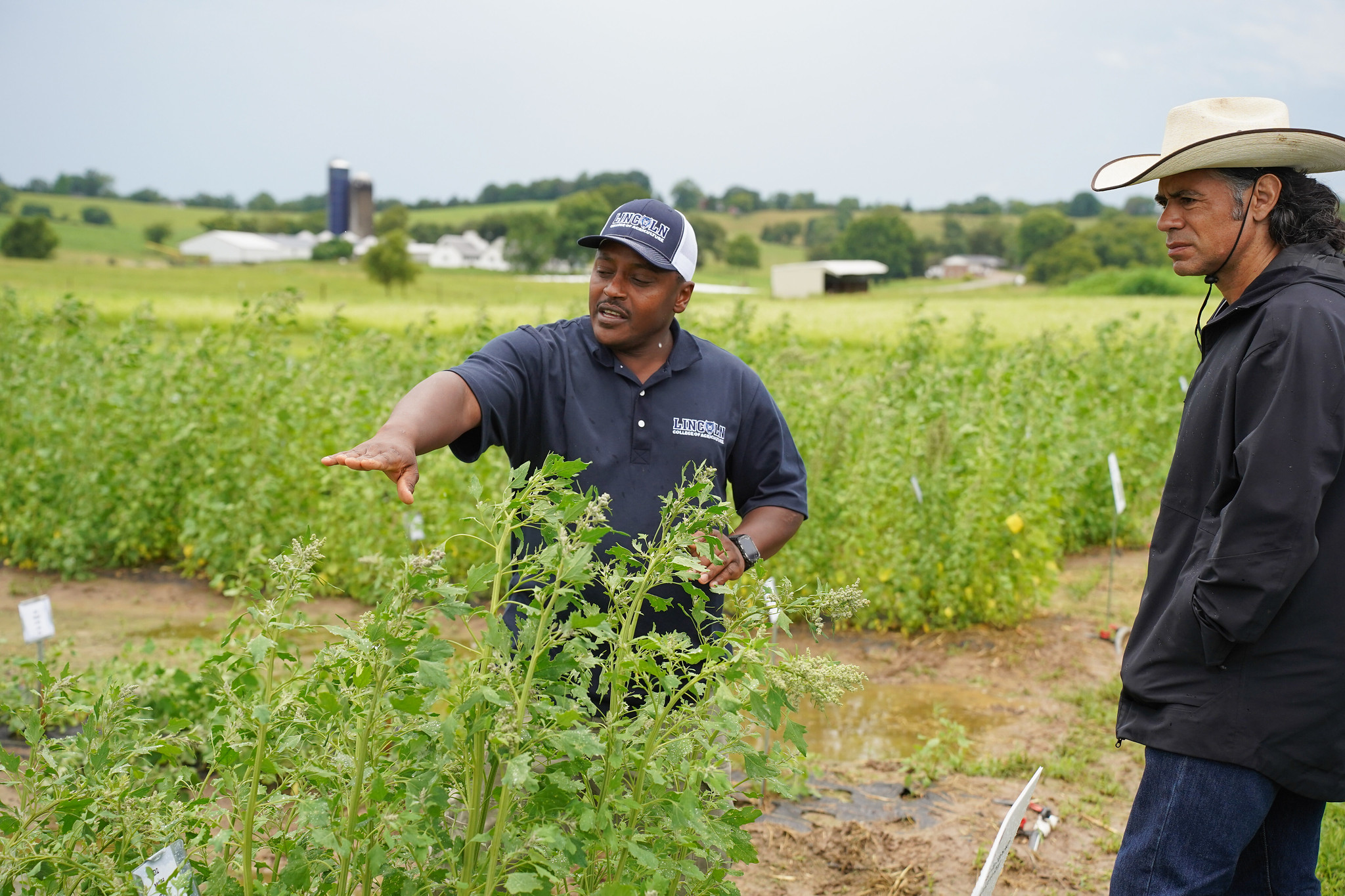
Grato Ndunguru reveals cultivation methods to attendees in quinoa fields at Quinoa Field Day.
Fatema Tuj Johora, LU graduate student, said that the term “quinoa” signifies “the mother of all grains,” reflecting its historical significance and nutritional value. She explained that promoting quinoa cultivation in the Midwest and across the U.S. can lead to a more balanced diet and food system. Quinoa grains are gluten-free and rich in protein, essential amino acids, minerals and vitamins. Participants learned that due to these nutritional properties and health benefits, quinoa is considered a novel and popular health food, often referred to as a superfood.

Fatema Tuj Johora, LU graduate student, said quinoa consumption in the Midwest can lead to a more balanced diet and food system.
“Like quinoa grains, quinoa leafy greens are highly nutritious, with more protein and omega-3 fatty acids, fewer carbohydrates and abundant amino acids and minerals compared to similar leafy vegetables,” Pathan said. “They also have health-promoting properties such as antimicrobial, anticancer, antidiabetic and anti-obesity.” Participants learned quinoa greens are low in fat, high in fiber and a good source of calories. Additionally, microgreens and sprouts, young plantlets packed with nutrients and health-promoting micronutrients, offer similar benefits to mature vegetables and have gained recognition in food industries and professional healthcare.
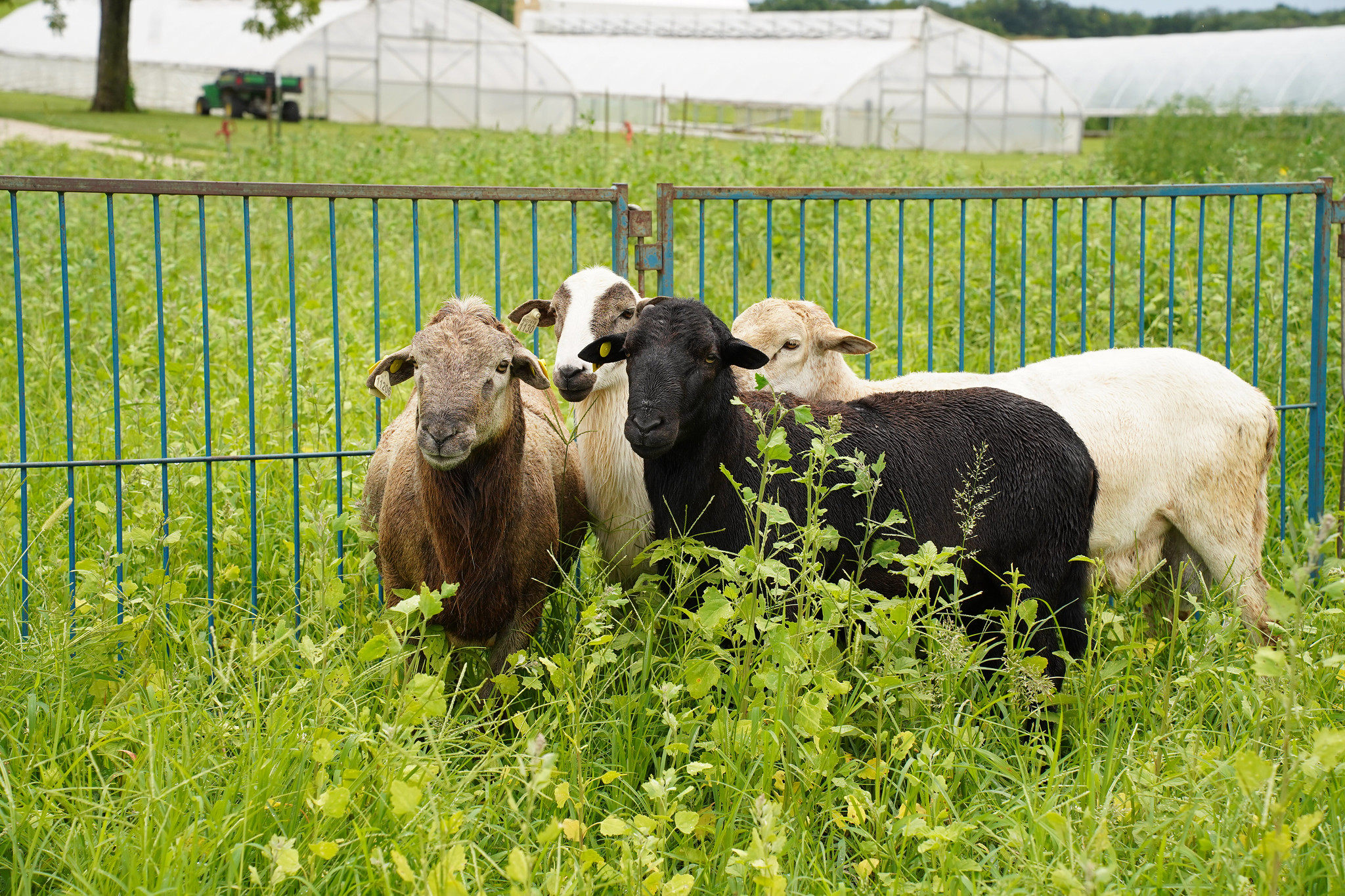
Small ruminants grazing with quinoa forage at Lincoln University.
As discussions on the health benefits of quinoa concluded from human consumption, the focus transitioned to its potential use as a forage crop for livestock and small ruminants. Preliminary results from Lincoln University’s research presented at Quinoa Field Day indicate that quinoa hay boasts a high protein concentration and nutrient profile, comparable to other common forages such as alfalfa and clover. Given the decreasing hay production in the U.S. over the last decade and the increasing demand for sustainable livestock feed, quinoa presents a promising alternative, Pathan said.

Up-close quinoa plants at LU Carver Farm.
“I chose Lincoln because it is one of the pioneers in quinoa research,” said Mustafa Kamal Shahadat, LU graduate student. “I was looking for a place to do extensive quinoa research, and I found Lincoln to be a perfect fit.” This sentiment underlines the innovative spirit and dedication that drives LUCR's work. With ongoing research and cutting-edge cultivation practices, LUCR continues to help lead the way in quinoa research, fostering a resilient and sustainable agricultural future. The knowledge shared and connections made at Quinoa Field Day highlight the potential of quinoa as a valuable crop for the Midwest. As Lincoln University moves forward, its commitment to supporting small farmers and promoting sustainable agriculture remains steadfast.
If you are interested in cultivating quinoa, please contact Salliullah Pathan at pathans@lincolnu.edu or (573) 681-5963.
